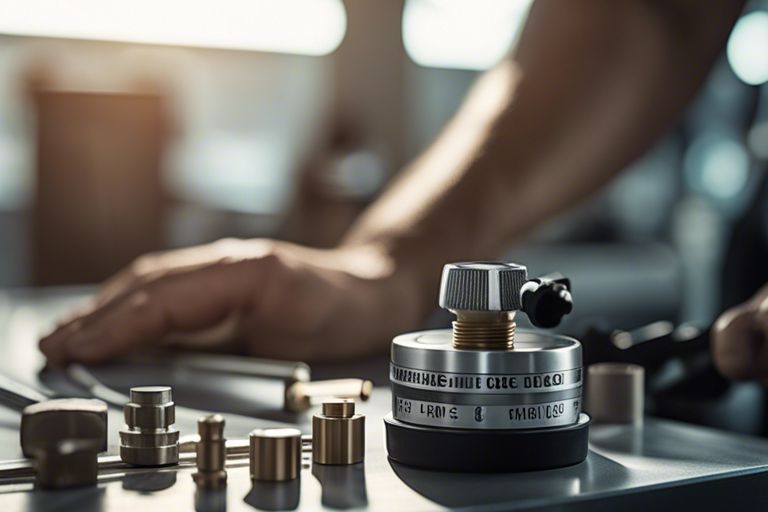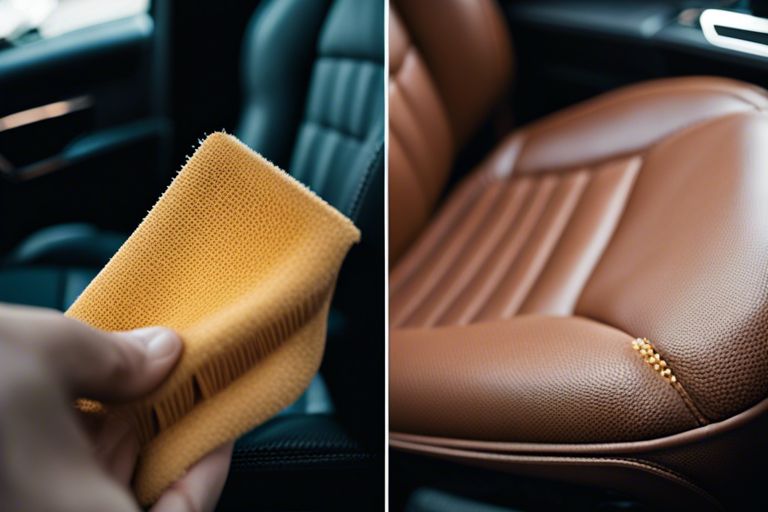Do you find that your vehicle is sputtering, stalling, or losing power? These are all potential signs that your fuel pressure regulator may be clogged or dirty. Neglecting to clean your fuel pressure regulator can lead to engine performance issues and even potential safety hazards. In this informative blog post, we’ll guide you through the process of cleaning your fuel pressure regulator to ensure proper fuel flow and optimal engine performance. By following these steps, you can prevent costly repairs and keep your vehicle running smoothly.
Preparation for Cleaning
Before you begin the process of cleaning your fuel pressure regulator, there are a few important steps to take to ensure a safe and effective cleaning process. Take the time to prepare and gather all the necessary tools and materials before getting started.
Safety Precautions
When working on any part of your vehicle’s fuel system, it’s important to take safety precautions to avoid accidents or injuries. Make sure to work in a well-ventilated area to avoid inhaling any fumes, and always wear gloves and eye protection when handling any fuel system components. Additionally, it’s crucial to work in a space free of open flames or sources of ignition to prevent any potential fire hazards.
Tools and Materials Needed
To clean your fuel pressure regulator, you will need a few tools and materials to ensure that the process goes smoothly. You will need a set of screwdrivers, a clean cloth, a can of fuel system cleaner, and a fuel pressure gauge. It’s important to use a fuel system cleaner that is specifically designed for use with fuel pressure regulators to avoid damaging the component. Additionally, always make sure to have a fire extinguisher nearby in case of any unexpected accidents.

Removal of the Fuel Pressure Regulator
Assuming you have already identified the signs of a faulty fuel pressure regulator and have decided to clean or replace it, the first step is to remove the fuel pressure regulator from your vehicle. This process may vary slightly depending on the make and model of your car, so it’s a good idea to consult your owner’s manual or seek advice from online forums or resources such as Fuel Pressure Regulator/Dampener HELP for specific instructions.
Locating the Fuel Pressure Regulator
The fuel pressure regulator is typically located somewhere near the fuel injectors, either on the fuel rail or mounted to the intake manifold. It resembles a small canister with a vacuum hose attached to it. If you are having trouble locating it, refer to your vehicle’s service manual for detailed diagrams and descriptions. Identifying the regulator is crucial for successful removal and cleaning.
Steps to Remove the Fuel Pressure Regulator
To remove the fuel pressure regulator, you will first need to relieve the fuel system pressure by disconnecting the fuel pump fuse or relay and running the engine until it stalls. This step is crucial for your safety as it will prevent fuel from spraying when you disconnect the regulator. Once the pressure is relieved, you can disconnect the vacuum hose and the fuel return line from the regulator. Then, use the appropriate tools to unbolt the regulator from its mounting location. Be prepared for some fuel leakage during this process, so have a container or rags ready to catch any spills. Remember to wear protective gloves and eyewear to prevent contact with fuel or fumes.

Cleaning the Fuel Pressure Regulator
Keep your fuel pressure regulator clean to ensure the proper functioning of your vehicle’s fuel system. Cleaning your fuel pressure regulator is an essential maintenance task that can help improve fuel efficiency and overall engine performance. In this guide, we will provide you with step-by-step instructions on how to clean your fuel pressure regulator to keep your vehicle running smoothly. For a more comprehensive guide, you can also visit How to Clean Fuel Pressure Regulator? [Complete Guide].
Disassembling the Regulator
Before you begin cleaning your fuel pressure regulator, it is important to disassemble it properly. Start by carefully removing the regulator from the fuel system and then take it apart, following the manufacturer’s instructions. Take note of the placement of each component as you disassemble the regulator, as this will be crucial when reassembling it. Ensure that you work in a well-ventilated area and take precautions to avoid any fuel spillage during the process.
Cleaning Process and Techniques
Now that you have disassembled the regulator, it’s time to clean each component thoroughly. Use a suitable cleaning solution and a soft brush to remove any dirt, debris, or fuel deposits from the regulator parts. Pay special attention to the diaphragm and the spring, as any build-up in these areas could affect the regulator’s performance. Be sure to inspect each component for any signs of wear or damage, as this may indicate the need for replacement. Once you have cleaned and inspected all the parts, reassemble the regulator following the manufacturer’s guidelines and reinstall it in your vehicle.
Reinstallation and Testing
To ensure your fuel pressure regulator is back in proper working order after cleaning, you will need to reinstall it and test for functionality. For detailed step-by-step instructions on how to clean fuel pressure regulator, you can refer to the guide How To Clean Fuel Pressure Regulator [7 Easy Steps].
Reinstalling the Fuel Pressure Regulator
Once the fuel pressure regulator has been thoroughly cleaned, it’s time to reinstall it. Make sure to carefully position the regulator back into place, ensuring a secure fit. Double-check all connections and hoses to ensure everything is properly reattached. This step is crucial to prevent any fuel leaks or malfunctions. Ensure all fasteners are tightened and secure to avoid any potential issues down the line.
Testing for Proper Functionality
With the fuel pressure regulator back in place, it’s important to test for proper functionality. Start the engine and let it run for a few minutes. Monitor the fuel pressure gauge to ensure it remains stable within the specified range for your vehicle. Pay close attention to any signs of fuel leaks or irregular engine performance. A clean and functioning fuel pressure regulator should result in steady fuel pressure and smooth engine operation. If you notice any abnormalities, it’s important to address them immediately before they escalate into more serious issues.
It is crucial to reinstall the fuel pressure regulator correctly to prevent fuel leaks and ensure proper engine function. By testing for proper functionality after reinstallation, you can catch any issues early and prevent potential damage to your vehicle.
Conclusion
Ultimately, cleaning your fuel pressure regulator is a simple and necessary task to ensure the smooth operation of your vehicle. By following the steps outlined in this guide, you can easily remove any accumulated dirt or debris, preventing potential fuel delivery issues and maintaining optimum engine performance. Regular maintenance of your fuel pressure regulator will not only save you money on costly repairs in the long run but also ensure the safety and efficiency of your vehicle. You should make it a part of your regular maintenance routine, and if you notice any signs of poor performance, don’t hesitate to check and clean your fuel pressure regulator immediately. By doing so, you can prolong the lifespan of your vehicle’s fuel system and enjoy a smoother driving experience.
FAQ
Q: Why is it important to clean the fuel pressure regulator?
A: Cleaning the fuel pressure regulator is important to ensure proper fuel flow and pressure, which is essential for the optimal performance of the engine. Over time, carbon build-up can affect the regulator’s functioning, leading to issues with fuel delivery and engine performance.
Q: When should the fuel pressure regulator be cleaned?
A: It is recommended to clean the fuel pressure regulator as part of regular maintenance, or whenever you experience symptoms of fuel delivery problems such as rough idling, stalling, or decreased fuel efficiency.
Q: How do I know if my fuel pressure regulator needs cleaning?
A: Common signs that the fuel pressure regulator needs cleaning include irregular idling, engine stalling, black smoke from the exhaust, or an illuminated check engine light. A fuel pressure test can also help diagnose any issues with the regulator.
Q: What is the process for cleaning the fuel pressure regulator?
A: To clean the fuel pressure regulator, first, locate it within the fuel system. Then, carefully remove it and inspect for any signs of damage or wear. Use a specialized fuel system cleaner and follow the manufacturer’s instructions for cleaning. Reinstall the regulator and perform a pressure test to ensure proper functioning.
Q: Can I clean the fuel pressure regulator myself, or should I take it to a professional?
A: While cleaning the fuel pressure regulator can be done as a DIY project, it is important to have a good understanding of the fuel system and the regulator’s components. If you are not confident in your abilities or do not have the necessary tools, it is best to seek the assistance of a professional mechanic to ensure the job is done correctly.
- How to Test Ac Compressor Clutch: Mastering the Ultimate AC Diagnosis - May 17, 2024
- How Does Water Infiltrate a Jet Ski Engine? - May 17, 2024
- How to Master Code Reading with Autozone’s Reader: Unlock Your Car’s Secrets - May 17, 2024


